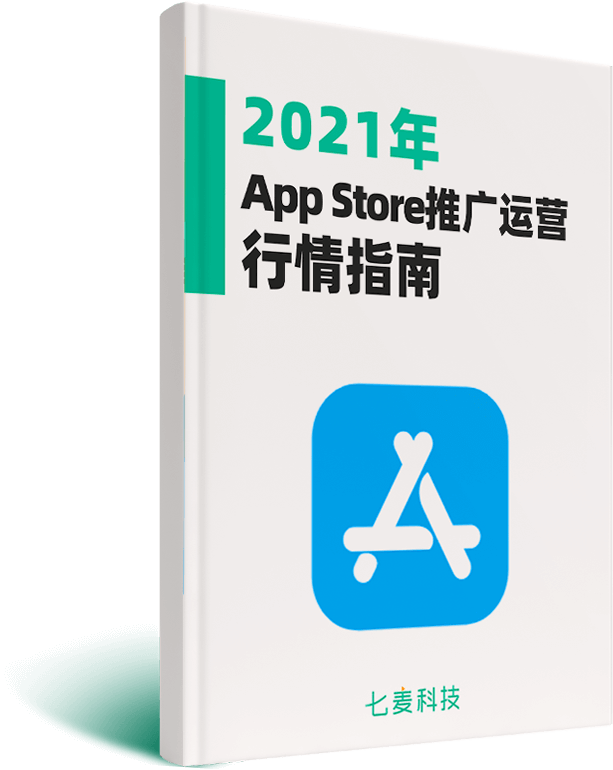PlantNet
Plant Identification
开发者: Cirad-France
24天11小时
最新版本上线距今
6
近1年版本更新次数
2013-02-15
全球最早版本上线日期
版本: 3.22.2
版本更新日期
2025-03-31

PlantNet
Plant Identification
更新日志
Dive into nature with our news offline version featuring the cutting-edge 2025 identification model and enhanced genus/family explorer. We've introduced a fresh user ranking system by top percent, added new social features to mute/unmute users and ping friends in observation comments. Happy exploring!应用描述
Pl@ntNet is an application that allows you to identify plants simply by photographing them with your smartphone. Very useful when you don't have a botanist on hand!
Pl@ntNet is also a great citizen science project: all the plants you photograph are collected and analysed by scientists around the world to better understand the evolution of plant biodiversity and to better preserve it.
Pl@ntNet allows you to identify and better understand all kinds of plants living in nature: flowering plants, trees, grasses, conifers, ferns, vines, wild salads, cacti (and many more).
Pl@ntNet can also identify a large number of cultivated plants (in parks and gardens) but this is not its primary purpose. We especially need Pl@ntNet’s users to inventory the wild plants, those that you can observe in nature, but also those that grow on the sidewalks of cities or in the middle of your vegetable garden!
The more visual information you give to Pl@ntNet about the plant you are observing, the more accurate the identification will be. There are indeed many plants that look alike from afar and it is sometimes small details that distinguish two species of the same genus.
Flowers, fruits and leaves are the most characteristic organs of a species and it is them that should be photographed first. But any other detail can be useful, such as thorns, buds or hair on the stem. A photograph of the whole plant is also very useful information, but it is often not sufficient to allow a reliable identification.
At present, Pl@ntNet makes it possible to recognize about 20,000 species. We are still a long way from the 360,000 species living on earth, but Pl@ntNet is getting richer every day thanks to the contributions of the most experienced users among you.
Don't be afraid to contribute yourself! Your observation will be reviewed by the community and may one day join the photo gallery illustrating the species in the application.
The new version of Pl@ntNet released in January 2019 includes many improvements and new features:
-The ability to filter recognized species by genus or family.
-The differentiated data revision that gives more weight to users who have demonstrated the most skills (in particular the number of species observed, validated by the community).
-The re-identification of shared observations, whether yours or those of other users of the application.
-The multi-flora identification that allows you to search for the photographed plant in all the flora of the application and not only in the one you have selected. Very useful when you are not sure what flora to look for.
-The selection of your favorite floras to access them more quickly.
-The navigation at different taxonomic levels in image galleries.
-The mapping of your observations.
-Links to many factsheets.
The web version of the application is also available at the following address: https://identify.plantnet.org/版本: 3.21.5
版本更新日期
2025-02-06

PlantNet
Plant Identification
更新日志
We've turbocharged your app for a zippier experience by trimming data load and upgrading our tech game! Plus, enjoy enhanced language support and get ready for some awesome new features rolling out soon. Get set to tag your plant observations like never before!应用描述
Pl@ntNet is an application that allows you to identify plants simply by photographing them with your smartphone. Very useful when you don't have a botanist on hand!
Pl@ntNet is also a great citizen science project: all the plants you photograph are collected and analysed by scientists around the world to better understand the evolution of plant biodiversity and to better preserve it.
Pl@ntNet allows you to identify and better understand all kinds of plants living in nature: flowering plants, trees, grasses, conifers, ferns, vines, wild salads, cacti (and many more).
Pl@ntNet can also identify a large number of cultivated plants (in parks and gardens) but this is not its primary purpose. We especially need Pl@ntNet’s users to inventory the wild plants, those that you can observe in nature, but also those that grow on the sidewalks of cities or in the middle of your vegetable garden!
The more visual information you give to Pl@ntNet about the plant you are observing, the more accurate the identification will be. There are indeed many plants that look alike from afar and it is sometimes small details that distinguish two species of the same genus.
Flowers, fruits and leaves are the most characteristic organs of a species and it is them that should be photographed first. But any other detail can be useful, such as thorns, buds or hair on the stem. A photograph of the whole plant is also very useful information, but it is often not sufficient to allow a reliable identification.
At present, Pl@ntNet makes it possible to recognize about 20,000 species. We are still a long way from the 360,000 species living on earth, but Pl@ntNet is getting richer every day thanks to the contributions of the most experienced users among you.
Don't be afraid to contribute yourself! Your observation will be reviewed by the community and may one day join the photo gallery illustrating the species in the application.
The new version of Pl@ntNet released in January 2019 includes many improvements and new features:
-The ability to filter recognized species by genus or family.
-The differentiated data revision that gives more weight to users who have demonstrated the most skills (in particular the number of species observed, validated by the community).
-The re-identification of shared observations, whether yours or those of other users of the application.
-The multi-flora identification that allows you to search for the photographed plant in all the flora of the application and not only in the one you have selected. Very useful when you are not sure what flora to look for.
-The selection of your favorite floras to access them more quickly.
-The navigation at different taxonomic levels in image galleries.
-The mapping of your observations.
-Links to many factsheets.
The web version of the application is also available at the following address: https://identify.plantnet.org/版本: 3.20.6
版本更新日期
2024-09-27

PlantNet
Plant Identification
更新日志
Spot it, log it! Use the new 'observed' filter with an eye icon to keep track of what you've seen. Autofill locality information locally on the device, and explore nearby species directly from the explorer! Enjoy our refreshed UI with landscape mode.应用描述
Pl@ntNet is an application that allows you to identify plants simply by photographing them with your smartphone. Very useful when you don't have a botanist on hand!
Pl@ntNet is also a great citizen science project: all the plants you photograph are collected and analysed by scientists around the world to better understand the evolution of plant biodiversity and to better preserve it.
Pl@ntNet allows you to identify and better understand all kinds of plants living in nature: flowering plants, trees, grasses, conifers, ferns, vines, wild salads, cacti (and many more).
Pl@ntNet can also identify a large number of cultivated plants (in parks and gardens) but this is not its primary purpose. We especially need Pl@ntNet’s users to inventory the wild plants, those that you can observe in nature, but also those that grow on the sidewalks of cities or in the middle of your vegetable garden!
The more visual information you give to Pl@ntNet about the plant you are observing, the more accurate the identification will be. There are indeed many plants that look alike from afar and it is sometimes small details that distinguish two species of the same genus.
Flowers, fruits and leaves are the most characteristic organs of a species and it is them that should be photographed first. But any other detail can be useful, such as thorns, buds or hair on the stem. A photograph of the whole plant is also very useful information, but it is often not sufficient to allow a reliable identification.
At present, Pl@ntNet makes it possible to recognize about 20,000 species. We are still a long way from the 360,000 species living on earth, but Pl@ntNet is getting richer every day thanks to the contributions of the most experienced users among you.
Don't be afraid to contribute yourself! Your observation will be reviewed by the community and may one day join the photo gallery illustrating the species in the application.
The new version of Pl@ntNet released in January 2019 includes many improvements and new features:
-The ability to filter recognized species by genus or family.
-The differentiated data revision that gives more weight to users who have demonstrated the most skills (in particular the number of species observed, validated by the community).
-The re-identification of shared observations, whether yours or those of other users of the application.
-The multi-flora identification that allows you to search for the photographed plant in all the flora of the application and not only in the one you have selected. Very useful when you are not sure what flora to look for.
-The selection of your favorite floras to access them more quickly.
-The navigation at different taxonomic levels in image galleries.
-The mapping of your observations.
-Links to many factsheets.
The web version of the application is also available at the following address: https://identify.plantnet.org/版本: 3.20.4
版本更新日期
2024-09-11

PlantNet
Plant Identification
更新日志
Spot it, log it! Use the new 'observed' filter with an eye icon to keep track of what you've seen. Autofill locality information locally on the device, and explore nearby species directly from the explorer! Enjoy our refreshed UI with landscape mode.应用描述
暂无应用描述数据
版本: 3.19.8
版本更新日期
2024-07-29

PlantNet
Plant Identification
更新日志
Explore your plant observations effortlessly with filters designed to arrange your sightings as gently as a breeze sways the grass. We've cultivated new statistics to help follow your own contributions and other user contributions, watch your impact grow! Finally, updates to our app's undergrowth ensure smoother growth and fewer bugs, so the app can flourish without a hitch!应用描述
Pl@ntNet is an application that allows you to identify plants simply by photographing them with your smartphone. Very useful when you don't have a botanist on hand!
Pl@ntNet is also a great citizen science project: all the plants you photograph are collected and analysed by scientists around the world to better understand the evolution of plant biodiversity and to better preserve it.
Pl@ntNet allows you to identify and better understand all kinds of plants living in nature: flowering plants, trees, grasses, conifers, ferns, vines, wild salads, cacti (and many more).
Pl@ntNet can also identify a large number of cultivated plants (in parks and gardens) but this is not its primary purpose. We especially need Pl@ntNet’s users to inventory the wild plants, those that you can observe in nature, but also those that grow on the sidewalks of cities or in the middle of your vegetable garden!
The more visual information you give to Pl@ntNet about the plant you are observing, the more accurate the identification will be. There are indeed many plants that look alike from afar and it is sometimes small details that distinguish two species of the same genus.
Flowers, fruits and leaves are the most characteristic organs of a species and it is them that should be photographed first. But any other detail can be useful, such as thorns, buds or hair on the stem. A photograph of the whole plant is also very useful information, but it is often not sufficient to allow a reliable identification.
At present, Pl@ntNet makes it possible to recognize about 20,000 species. We are still a long way from the 360,000 species living on earth, but Pl@ntNet is getting richer every day thanks to the contributions of the most experienced users among you.
Don't be afraid to contribute yourself! Your observation will be reviewed by the community and may one day join the photo gallery illustrating the species in the application.
The new version of Pl@ntNet released in January 2019 includes many improvements and new features:
-The ability to filter recognized species by genus or family.
-The differentiated data revision that gives more weight to users who have demonstrated the most skills (in particular the number of species observed, validated by the community).
-The re-identification of shared observations, whether yours or those of other users of the application.
-The multi-flora identification that allows you to search for the photographed plant in all the flora of the application and not only in the one you have selected. Very useful when you are not sure what flora to look for.
-The selection of your favorite floras to access them more quickly.
-The navigation at different taxonomic levels in image galleries.
-The mapping of your observations.
-Links to many factsheets.
The web version of the application is also available at the following address: https://identify.plantnet.org/版本: 3.19.3
版本更新日期
2024-06-04

PlantNet
Plant Identification
更新日志
Explore your plant observations effortlessly with filters designed to arrange your sightings as gently as a breeze sways the grass. We've cultivated new statistics to help follow your own contributions and other user contributions, watch your impact grow! Finally, updates to our app's undergrowth ensure smoother growth and fewer bugs, so the app can flourish without a hitch!应用描述
Pl@ntNet is an application that allows you to identify plants simply by photographing them with your smartphone. Very useful when you don't have a botanist on hand!
Pl@ntNet is also a great citizen science project: all the plants you photograph are collected and analysed by scientists around the world to better understand the evolution of plant biodiversity and to better preserve it.
Pl@ntNet allows you to identify and better understand all kinds of plants living in nature: flowering plants, trees, grasses, conifers, ferns, vines, wild salads, cacti (and many more).
Pl@ntNet can also identify a large number of cultivated plants (in parks and gardens) but this is not its primary purpose. We especially need Pl@ntNet’s users to inventory the wild plants, those that you can observe in nature, but also those that grow on the sidewalks of cities or in the middle of your vegetable garden!
The more visual information you give to Pl@ntNet about the plant you are observing, the more accurate the identification will be. There are indeed many plants that look alike from afar and it is sometimes small details that distinguish two species of the same genus.
Flowers, fruits and leaves are the most characteristic organs of a species and it is them that should be photographed first. But any other detail can be useful, such as thorns, buds or hair on the stem. A photograph of the whole plant is also very useful information, but it is often not sufficient to allow a reliable identification.
At present, Pl@ntNet makes it possible to recognize about 20,000 species. We are still a long way from the 360,000 species living on earth, but Pl@ntNet is getting richer every day thanks to the contributions of the most experienced users among you.
Don't be afraid to contribute yourself! Your observation will be reviewed by the community and may one day join the photo gallery illustrating the species in the application.
The new version of Pl@ntNet released in January 2019 includes many improvements and new features:
-The ability to filter recognized species by genus or family.
-The differentiated data revision that gives more weight to users who have demonstrated the most skills (in particular the number of species observed, validated by the community).
-The re-identification of shared observations, whether yours or those of other users of the application.
-The multi-flora identification that allows you to search for the photographed plant in all the flora of the application and not only in the one you have selected. Very useful when you are not sure what flora to look for.
-The selection of your favorite floras to access them more quickly.
-The navigation at different taxonomic levels in image galleries.
-The mapping of your observations.
-Links to many factsheets.
The web version of the application is also available at the following address: https://identify.plantnet.org/版本: 3.18.4
版本更新日期
2024-03-28

PlantNet
Plant Identification
更新日志
Step into a greener, more vibrant world with our latest update! For our botanical explorers, we've rooted out bugs and planted new small features. Capture the essence of nature with enhanced GPS-rich images, ensuring every leaf and petal is mapped to perfection. Let's grow together — update now and let your green heart wander.应用描述
Pl@ntNet is an application that allows you to identify plants simply by photographing them with your smartphone. Very useful when you don't have a botanist on hand!
Pl@ntNet is also a great citizen science project: all the plants you photograph are collected and analysed by scientists around the world to better understand the evolution of plant biodiversity and to better preserve it.
Pl@ntNet allows you to identify and better understand all kinds of plants living in nature: flowering plants, trees, grasses, conifers, ferns, vines, wild salads, cacti (and many more).
Pl@ntNet can also identify a large number of cultivated plants (in parks and gardens) but this is not its primary purpose. We especially need Pl@ntNet’s users to inventory the wild plants, those that you can observe in nature, but also those that grow on the sidewalks of cities or in the middle of your vegetable garden!
The more visual information you give to Pl@ntNet about the plant you are observing, the more accurate the identification will be. There are indeed many plants that look alike from afar and it is sometimes small details that distinguish two species of the same genus.
Flowers, fruits and leaves are the most characteristic organs of a species and it is them that should be photographed first. But any other detail can be useful, such as thorns, buds or hair on the stem. A photograph of the whole plant is also very useful information, but it is often not sufficient to allow a reliable identification.
At present, Pl@ntNet makes it possible to recognize about 20,000 species. We are still a long way from the 360,000 species living on earth, but Pl@ntNet is getting richer every day thanks to the contributions of the most experienced users among you.
Don't be afraid to contribute yourself! Your observation will be reviewed by the community and may one day join the photo gallery illustrating the species in the application.
The new version of Pl@ntNet released in January 2019 includes many improvements and new features:
-The ability to filter recognized species by genus or family.
-The differentiated data revision that gives more weight to users who have demonstrated the most skills (in particular the number of species observed, validated by the community).
-The re-identification of shared observations, whether yours or those of other users of the application.
-The multi-flora identification that allows you to search for the photographed plant in all the flora of the application and not only in the one you have selected. Very useful when you are not sure what flora to look for.
-The selection of your favorite floras to access them more quickly.
-The navigation at different taxonomic levels in image galleries.
-The mapping of your observations.
-Links to many factsheets.
The web version of the application is also available at the following address: https://identify.plantnet.org/版本: 3.17.6
版本更新日期
2024-03-11

PlantNet
Plant Identification
更新日志
Added Belarusian, Occitan, and Lithuanian languages, fixed critical fullscreen image bug, enhanced group functionality and added species-related features and fixes.应用描述
暂无应用描述数据
版本: 3.17.5
版本更新日期
2023-12-05

PlantNet
Plant Identification
更新日志
Added Belarusian, Occitan, and Lithuanian languages, fixed critical fullscreen image bug, enhanced group functionality and added species-related features and fixes.应用描述
Pl@ntNet is an application that allows you to identify plants simply by photographing them with your smartphone. Very useful when you don't have a botanist on hand!
Pl@ntNet is also a great citizen science project: all the plants you photograph are collected and analysed by scientists around the world to better understand the evolution of plant biodiversity and to better preserve it.
Pl@ntNet allows you to identify and better understand all kinds of plants living in nature: flowering plants, trees, grasses, conifers, ferns, vines, wild salads, cacti (and many more).
Pl@ntNet can also identify a large number of cultivated plants (in parks and gardens) but this is not its primary purpose. We especially need Pl@ntNet’s users to inventory the wild plants, those that you can observe in nature, but also those that grow on the sidewalks of cities or in the middle of your vegetable garden!
The more visual information you give to Pl@ntNet about the plant you are observing, the more accurate the identification will be. There are indeed many plants that look alike from afar and it is sometimes small details that distinguish two species of the same genus.
Flowers, fruits and leaves are the most characteristic organs of a species and it is them that should be photographed first. But any other detail can be useful, such as thorns, buds or hair on the stem. A photograph of the whole plant is also very useful information, but it is often not sufficient to allow a reliable identification.
At present, Pl@ntNet makes it possible to recognize about 20,000 species. We are still a long way from the 360,000 species living on earth, but Pl@ntNet is getting richer every day thanks to the contributions of the most experienced users among you.
Don't be afraid to contribute yourself! Your observation will be reviewed by the community and may one day join the photo gallery illustrating the species in the application.
The new version of Pl@ntNet released in January 2019 includes many improvements and new features:
-The ability to filter recognized species by genus or family.
-The differentiated data revision that gives more weight to users who have demonstrated the most skills (in particular the number of species observed, validated by the community).
-The re-identification of shared observations, whether yours or those of other users of the application.
-The multi-flora identification that allows you to search for the photographed plant in all the flora of the application and not only in the one you have selected. Very useful when you are not sure what flora to look for.
-The selection of your favorite floras to access them more quickly.
-The navigation at different taxonomic levels in image galleries.
-The mapping of your observations.
-Links to many factsheets.
The web version of the application is also available at the following address: https://identify.plantnet.org/版本: 3.16.2
版本更新日期
2023-07-26

PlantNet
Plant Identification
更新日志
Embed/offline identification is now available on iOS, add new filters on groups and users observations and update languages应用描述
Pl@ntNet is an application that allows you to identify plants simply by photographing them with your smartphone. Very useful when you don't have a botanist on hand!
Pl@ntNet is also a great citizen science project: all the plants you photograph are collected and analysed by scientists around the world to better understand the evolution of plant biodiversity and to better preserve it.
Pl@ntNet allows you to identify and better understand all kinds of plants living in nature: flowering plants, trees, grasses, conifers, ferns, vines, wild salads, cacti (and many more).
Pl@ntNet can also identify a large number of cultivated plants (in parks and gardens) but this is not its primary purpose. We especially need Pl@ntNet’s users to inventory the wild plants, those that you can observe in nature, but also those that grow on the sidewalks of cities or in the middle of your vegetable garden!
The more visual information you give to Pl@ntNet about the plant you are observing, the more accurate the identification will be. There are indeed many plants that look alike from afar and it is sometimes small details that distinguish two species of the same genus.
Flowers, fruits and leaves are the most characteristic organs of a species and it is them that should be photographed first. But any other detail can be useful, such as thorns, buds or hair on the stem. A photograph of the whole plant is also very useful information, but it is often not sufficient to allow a reliable identification.
At present, Pl@ntNet makes it possible to recognize about 20,000 species. We are still a long way from the 360,000 species living on earth, but Pl@ntNet is getting richer every day thanks to the contributions of the most experienced users among you.
Don't be afraid to contribute yourself! Your observation will be reviewed by the community and may one day join the photo gallery illustrating the species in the application.
The new version of Pl@ntNet released in January 2019 includes many improvements and new features:
-The ability to filter recognized species by genus or family.
-The differentiated data revision that gives more weight to users who have demonstrated the most skills (in particular the number of species observed, validated by the community).
-The re-identification of shared observations, whether yours or those of other users of the application.
-The multi-flora identification that allows you to search for the photographed plant in all the flora of the application and not only in the one you have selected. Very useful when you are not sure what flora to look for.
-The selection of your favorite floras to access them more quickly.
-The navigation at different taxonomic levels in image galleries.
-The mapping of your observations.
-Links to many factsheets.
The web version of the application is also available at the following address: https://identify.plantnet.org/

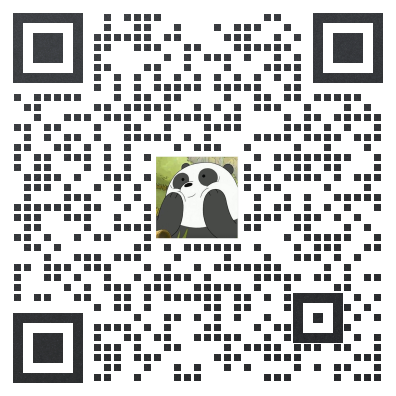

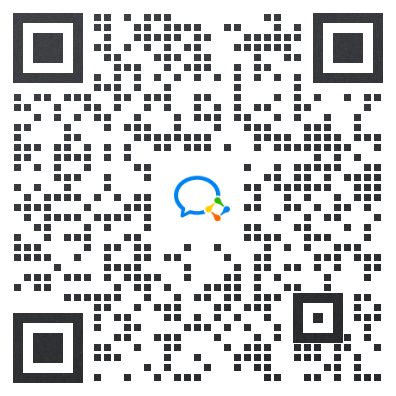
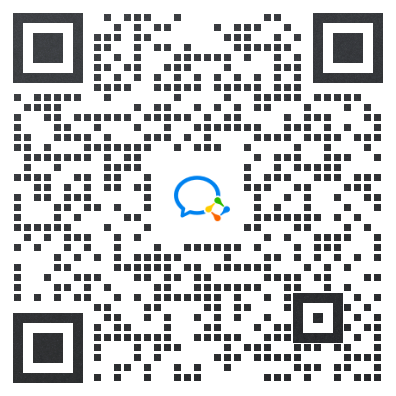
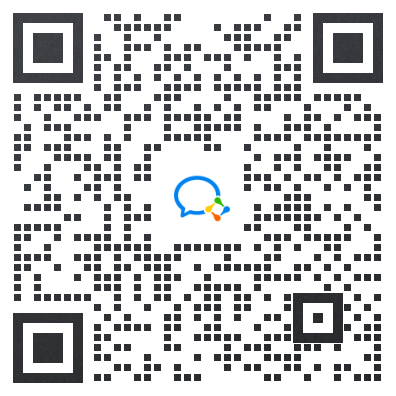




 京公网安备 11010502041000号
京公网安备 11010502041000号



